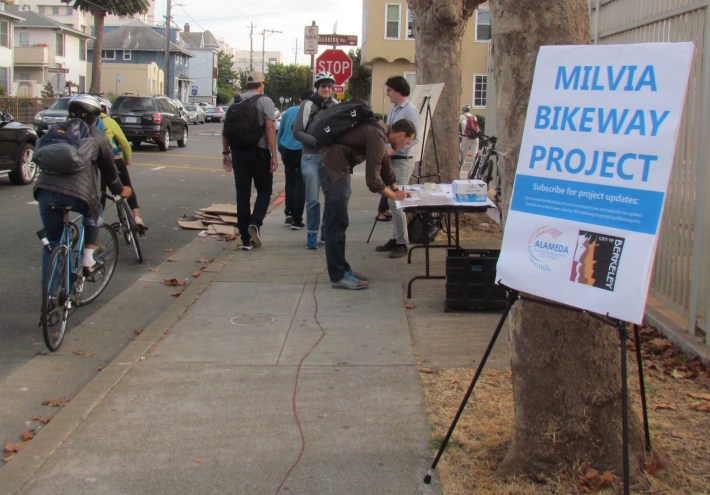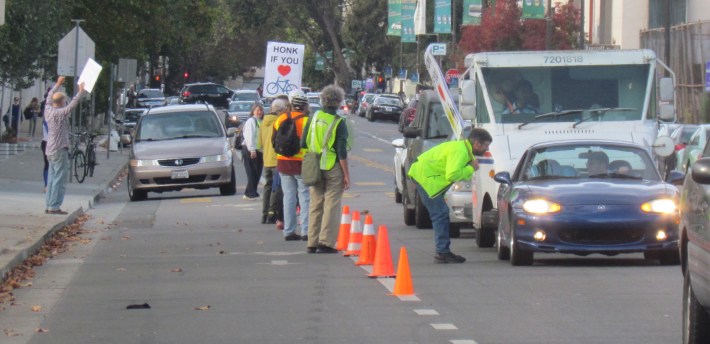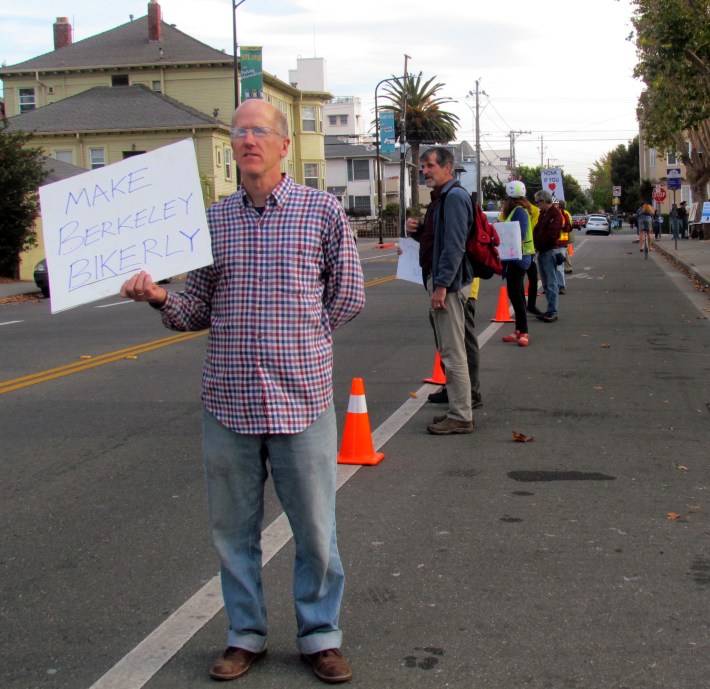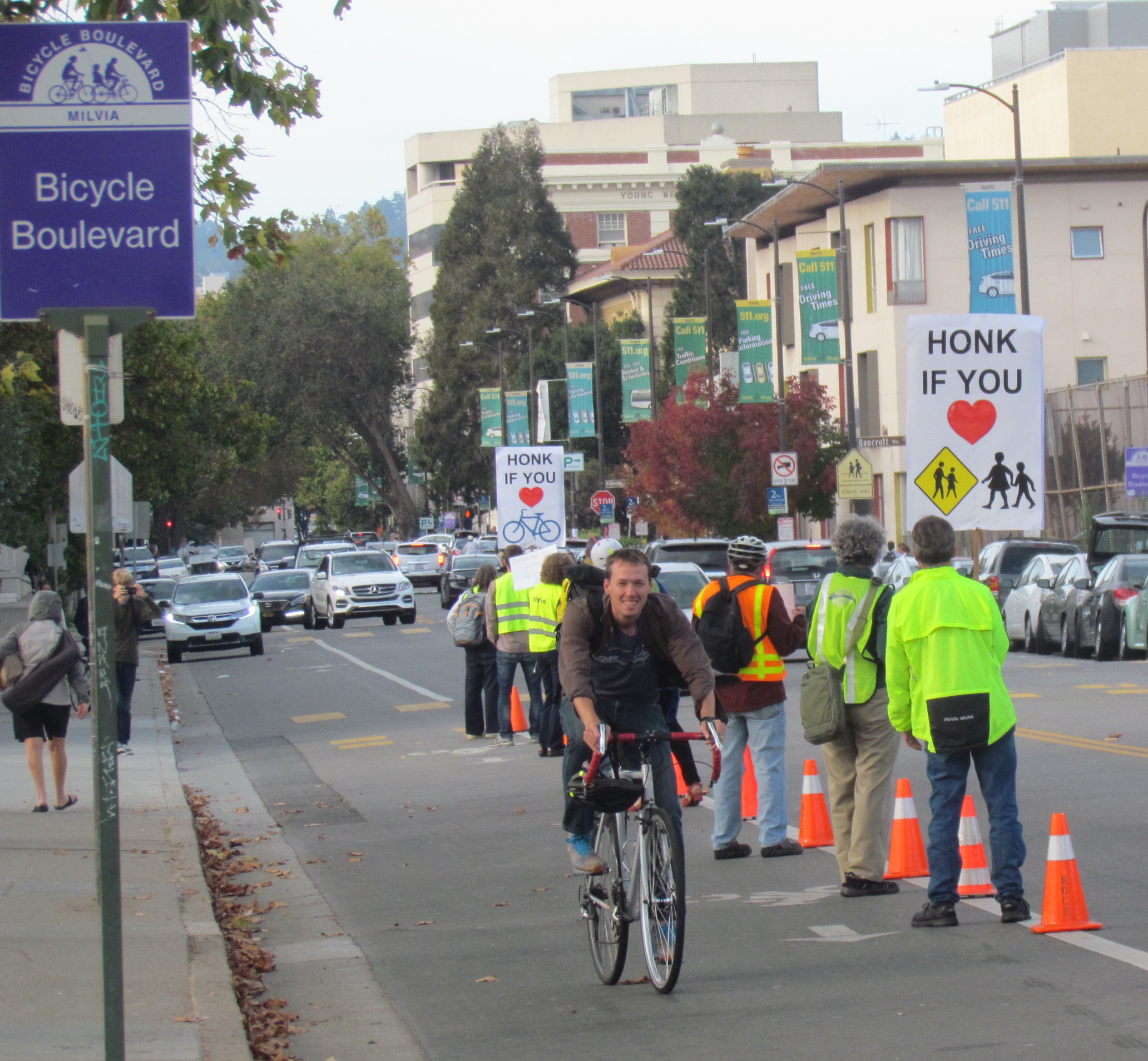Early Thursday evening, members of Walk Bike Berkeley stood on Milvia Street outside Berkeley High School to bring attention to the city's slow-moving plan to build protected bike lanes on the busy street.
Passing cars honked in response to their signs reading “Honk if you <3 [bikes] [pedestrians],” and bicyclists got high-fives. Passersby, drawn by the activity, stopped to talk to city officials at the table they'd set up to explain their plans and get people to fill out a survey about what's needed on Milvia.

Milvia is the busiest of the city's Bike Boulevards, passing through downtown and connecting riders to schools, city hall, the farmers market, the downtown library and YMCA, as well as to BART and other downtown destinations. It also has the highest number of collisions on any Bicycle Boulevard. It has been identified as a high priority for bicycle improvements by the city council, and city planners are studying options for protected bike lanes there.
They are looking at the pros and cons of two options: one-way protected bike lanes on both sides of the street, or a two-way protected lane on the east side, away from the busy Berkeley High School drop-off zone.
The problem is, neither of these options would begin construction until mid-2021. That's not soon enough for Walk Bike Berkeley, who want to see the street made safer as soon as possible. They suggest the city pilot cheaper, temporary protected bike lanes as soon as possible, which would give them a chance to assess them and make adjustments before beginning construction of permanent lanes.
Currently Milvia has a bike lane, but it comes and goes throughout downtown depending on the width of the street. In some of the narrower areas the lane disappears entirely and is replaced with sharrows. This happens on blocks that experience high levels of vehicle traffic.

Although for the most part these are slow-speed areas—short blocks between stop signs—that is no guarantee that car drivers won't try to pass anyway, and it is small comfort for nervous riders.
A woman who lives in the area came over to talk to the planners. She told them that she won't ride her bike in Berkeley at all because she feels unsafe. She's not an inexperienced rider; she rode on the UC Berkeley campus when she was a student there, and she grew up riding the suburban streets of Irvine, which, she said, was safer than Berkeley's streets for riding because there was plenty of room for bikes.
This woman is one of the riders that the Berkeley Bike Plan identifies as the people the city's bike network needs to serve—people who would be willing to ride if they felt safer. The fact that she chooses to drive everywhere, despite living in a walkable, transit-rich area, is exactly why Walk Bike Berkeley is pushing the city to move faster to make Milvia safer sooner.
“If the City of Berkeley is going to meet its Vision Zero road safety and climate goals, we have to move quickly to make walking and biking in Berkeley safer and more inviting,” said Liza Lutzker, one of the Walk Bike Berkeley members.

Other people attracted to the hullabaloo accepted flyers while they waited at the stop sign, or walked or rode over to talk. One man wanted to know “who was in charge” so he could complain about bike rider behavior. When he left, he agreed that protected bike lanes are probably the right solution for everyone in the busy area.
The sooner the better.






